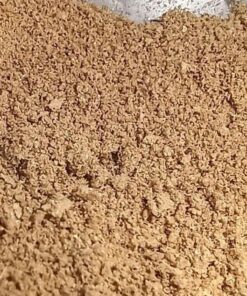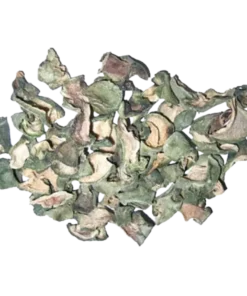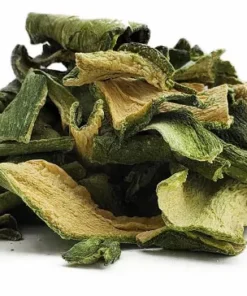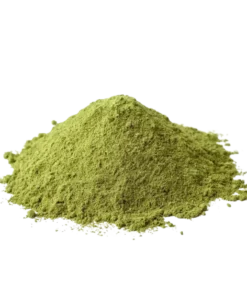A Comprehensive Guide to Cactus Drugs: Types, Effects, and How to Buy Them
Cactus plants, specifically those with psychoactive properties, have been used for centuries in various cultures for their hallucinogenic effects. Often referred to as “cactus drugs,” these plants contain compounds that induce altered states of consciousness and have been utilized for both spiritual and recreational purposes. In this guide, we will explore the different types of cactus drugs, their effects on the body and mind, their historical use, and where to buy cactus drugs in regions such as Australia, the UK, Europe, and the USA.
What Are Cactus Drugs?
Cactus drugs refer to psychoactive substances derived from certain species of cacti. These cacti contain naturally occurring compounds that can alter perception, cognition, and emotional states. The most well-known cactus drugs are derived from species like Psychoactive cactus species, San Pedro (Echinopsis pachanoi), and Peyote (Lophophora williamsii).
Key Psychoactive Compounds in Cactus Drugs
- Mescaline: The primary psychoactive compound found in cactus species like peyote and San Pedro is mescaline. Mescaline is a hallucinogen that affects serotonin receptors in the brain, leading to vivid visual hallucinations, altered perception of time, and enhanced sensory experiences.
- Other Alkaloids: While mescaline is the most prominent compound, some cacti also contain other alkaloids that can have mild psychoactive effects, contributing to the overall experience.
Types of Cactus Drugs
There are several cactus species that contain mescaline and other psychoactive compounds. The most commonly known and used cacti for producing cactus drugs include peyote, San Pedro, and the Peruvian torch. Below, we will explore each in more detail:
1. Peyote Cactus (Lophophora williamsii)
Peyote is one of the most famous psychoactive cacti, known for its small, round appearance and distinctive, spiny structure. It has a long history of use, particularly among Native American tribes in Mexico and the southwestern United States.
- Active Compound: Mescaline is the primary psychoactive compound in peyote. The cactus buttons, when consumed, are known to produce intense psychedelic experiences.
- Effects: The effects of peyote include vivid visual and auditory hallucinations, emotional experiences, and a sense of deep spiritual connection. Peyote is often used in ceremonial contexts, such as religious rituals or shamanic practices.
- Legal Status: Peyote is illegal in many countries due to the psychoactive effects of mescaline. However, in some regions, it is allowed for use in religious ceremonies (such as in Native American Church rituals).
2. San Pedro Cactus (Echinopsis pachanoi)
San Pedro is a tall, green cactus native to the Andes Mountains in South America. It has a long history of use in traditional spiritual practices and is often considered a sacred plant in indigenous cultures.
- Active Compound: Like peyote, San Pedro contains mescaline as its primary psychoactive compound.
- Effects: San Pedro produces similar effects to peyote but often in a milder form. Users report visual and auditory hallucinations, a sense of connection with nature, and emotional clarity. It is often consumed in the form of a tea made from the cactus’s stem.
- Legal Status: San Pedro is legal in many parts of the world, including parts of the United States, the UK, and Australia, although it is typically regulated due to its mescaline content.
3. Peruvian Torch Cactus (Echinopsis peruviana)
The Peruvian torch cactus is another member of the Echinopsis family, closely related to San Pedro. It is native to the Andean highlands and is known for its long, columnar shape and intense psychoactive effects.
- Active Compound: Mescaline is the main psychoactive substance found in the Peruvian torch cactus.
- Effects: The effects of the Peruvian torch are similar to San Pedro and peyote, with users experiencing altered perceptions, visual hallucinations, and deep emotional insights. Some users report more vivid and intense experiences with the Peruvian torch.
- Legal Status: The legal status of the Peruvian torch varies by country, but in many places, it is legal to grow and possess the cactus, as long as it is not consumed for its psychoactive properties.
How Cactus Drugs Affect the Body and Mind
The primary active ingredient in cactus drugs, mescaline, has a profound effect on the brain, particularly on serotonin receptors. Mescaline interacts with receptors in the brain to alter mood, perception, and thought patterns, leading to the characteristic effects of a psychedelic experience.
1. Psychological Effects
Mescaline produces a range of psychological effects, including:
- Hallucinations: Users experience vivid visual and auditory hallucinations. Colors may appear more intense, and shapes may shift and distort. Some users report feeling connected to a higher spiritual or mystical realm.
- Altered Perception of Time: Time may seem to slow down or speed up, and users often report a distortion in their sense of reality.
- Enhanced Sensory Perception: Sound, light, and tactile sensations are often heightened, making environments feel more immersive or surreal.
- Emotional and Psychological Insight: Many users report feeling a sense of clarity or understanding, leading to introspection or emotional breakthroughs. Some people use cactus drugs as a tool for self-reflection and personal growth.
2. Physical Effects
- Nausea and Vomiting: Especially with peyote, the consumption of the cactus may induce nausea or vomiting, which is sometimes seen as part of the purging process in ceremonial settings.
- Increased Heart Rate: Like other psychedelics, mescaline can cause an increase in heart rate and blood pressure, which may lead to feelings of anxiety or discomfort.
- Dilated Pupils: One of the common physical effects of mescaline consumption is the dilation of pupils, which is a typical side effect of many hallucinogens.
- Sweating and Flushing: Users may experience sweating or flushed skin as a result of the body’s response to the psychoactive compounds.
Benefits and Risks of Using Cactus Drugs
1. Potential Benefits
Cactus drugs, particularly those containing mescaline, have been studied for their potential therapeutic uses, particularly in the realm of mental health and spirituality.
- Spiritual Growth: Many indigenous cultures use cactus drugs in religious ceremonies, believing that they facilitate spiritual experiences and personal transformation.
- Therapeutic Potential: Some studies suggest that mescaline and other psychedelics may have therapeutic potential for treating mental health conditions such as depression, anxiety, PTSD, and addiction.
- Enhanced Creativity: Some users report that cactus drugs help unlock creative thinking, leading to new insights and innovative ideas.
2. Potential Risks
While the benefits of cactus drugs are appealing to some, there are also significant risks involved with their use, especially if consumed irresponsibly.
- Psychological Distress: Some individuals may experience anxiety, paranoia, or confusion during a psychedelic experience, especially in an uncontrolled environment.
- Physical Health Risks: Overconsumption or improper preparation of cactus drugs can lead to severe nausea, vomiting, and dehydration. There is also a risk of toxicity if the cacti are not prepared properly.
- Legal Consequences: In many regions, the sale, possession, and use of cactus drugs are highly regulated or outright illegal. Individuals caught using or distributing cactus drugs may face legal penalties.
How to Buy Cactus Drugs
If you’re interested in buying cactus drugs, it is important to consider the legalities, the source, and your health. Here’s a breakdown of where to buy cactus drugs in different parts of the world:
1. Buy Cactus Drugs in Australia
In Australia, mescaline-containing cacti like peyote and San Pedro are regulated substances, and it is illegal to use them for their psychoactive properties. However, the sale and purchase of cactus plants for ornamental or horticultural purposes is typically allowed. It is important to be aware of local laws and consult legal experts if you are interested in conducting research or use in a legal capacity.
2. Buy Cactus Drugs in the UK
In the UK, mescaline is classified as a Class A drug, making its use illegal without a license. However, there is often no legal restriction on purchasing cacti for ornamental or horticultural use. Always check local regulations before attempting to buy cacti for consumption or experimentation.
3. Buy Cactus Drugs in Europe
In many European countries, mescaline-containing cacti such as San Pedro and peyote are legal to grow but are often regulated for use as psychoactive substances. The sale of cacti for ornamental purposes is typically legal, but it’s crucial to be aware of each country’s specific laws regarding their use.
4. Buy Cactus Drugs in the USA
In the USA, the legal status of cactus drugs varies by state. Peyote is heavily regulated, and its use is restricted to specific religious groups. San Pedro and other mescaline-containing cacti are legal to grow in some states, but consuming them for their psychoactive effects is often illegal without proper authorization.
Conclusion
Cactus drugs, particularly those derived from peyote, San Pedro, and the Peruvian torch, offer profound experiences that have been explored for both spiritual and therapeutic purposes. While these cacti contain powerful psychoactive compounds like mescaline, their legal status is often complex and varies widely by region.
If you’re interested in buying cactus drugs in Australia, the UK, Europe, or the USA, always make sure to research local laws and regulations before making a purchase. Whether you’re seeking spiritual growth, creative insights, or simply exploring the potential of psychedelic substances, it’s essential to approach cactus drugs with caution and respect.
Cactus Drugs
Cactus Drugs
Cactus Drugs
Cactus Drugs




